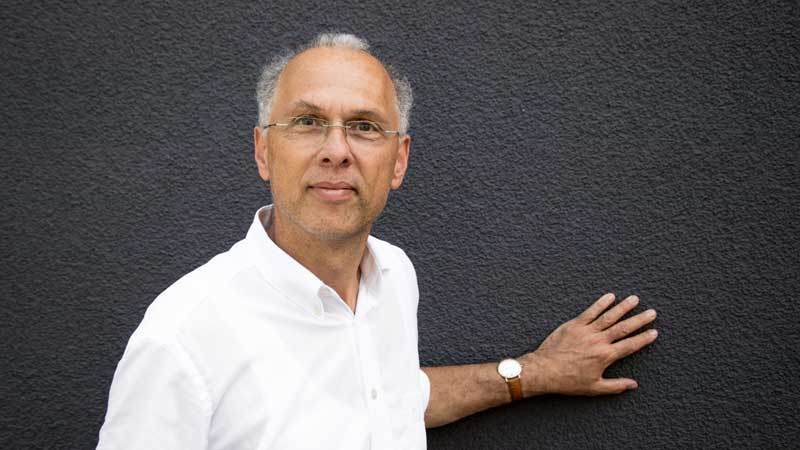Karim Fahmy Group
Structural basis of biological switches and biomolecular recognition

Structural changes in biopolymers are the basis of the regulation of their biological function. Exposure of specific sites for molecular recognition as well as switching processes between states of different activity of a biomolecule canthus be accomplished. Understanding the underlying mechanisms allows identifying putative sites for pharmacological intervention and opens the prospect of engineering artificial molecular switches derived from the highly efficient systems that have evolved for cellular signal transduction. We are interested in the mechanisms and dynamics of such structural transitions. Using vibrational spectroscopy, we monitor in real time functionally relevant changes in the structure of proteins. Our lab has thus made major contributions to the mechanistic characterization of G-protein-coupled receptors (GPCRs). These heptahelical membrane proteins transmit extracellular signals through the plasma membrane leading to activation of GTP-binding proteins (G-proteins). We have studied the bovine visual photoreceptor rhodopsin as a prototypical model system of class I GPCRs using UV-Vis and Fourier-transform infrared (FTIR) difference spectroscopy. Recently, we have established the cross-correlation of infrared absorption and fluorescence emission changes to observe long range coupling of conformational changes and domain movements in rhodopsin.
Future Projects and Goals
Future research focuses on lipid-protein and protein-protein interactions that are of more general importance for the function of membrane and cytoskeletal proteins, respectively. The physicochemical characterization of corresponding protein domains is studied by IR and fluorescence cross-correlation spectroscopy to identify protein domains that can act as functional switches in these systems. In combination with calorimetric studies we aim at the integration of structural and thermodynamic data. Thereby, reaction models can be deduced that describe both structural and energetic aspects of conformational changes in biopolymers. Such models will serve to design artificial switches. We will extend these studies to the time-resolved investigation DNA conformation and DNA recognition. Here, we are particularly interested in the structural changes of the DNA backbone which provides an important determinant for the interaction with a large variety of specific proteins and drugs that bind to DNA.
Methodological and Technical Expertise
- spectroscopy of structural transitions in recombinant proteins
- calorimetry for systemsbiology and molecular recognition
- Fourier Transform Infrared (FTIR) Spectroscopy
- Circular Dichroism (CD) Spectroscopy
- Static and Time-Resolved Fluorescence
- Differential Scanning Calorimetry (DSC)
- Isothermal Titration Calorimetry (ITC)
- Microcalorimetry of full organisms